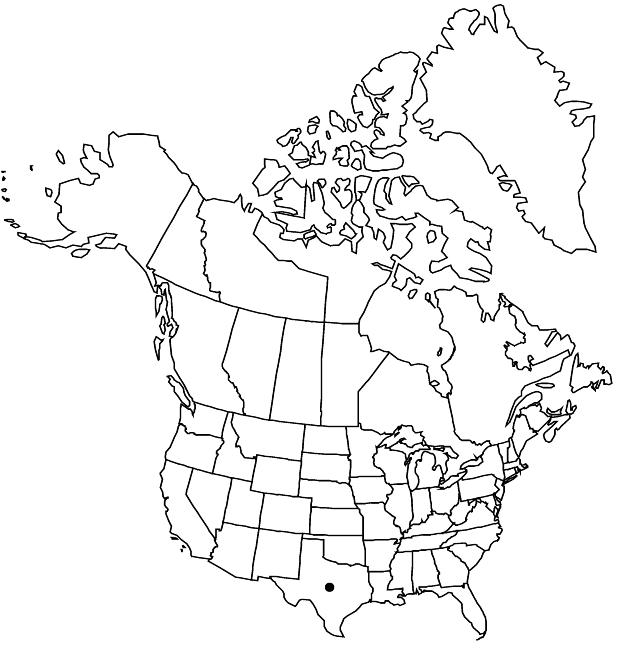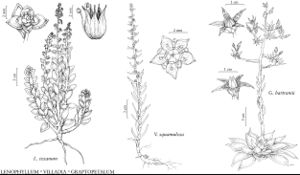Villadia squamulosa
in N. L. Britton and J. N. Rose, New N. Amer. Crassul., 5. 1903,.
Stems 1+ from tuberous roots, strict, with 20–70 ascending leaves, 1–3 mm diam., nearly smooth. Leaf-blades 1–2.5 cm × 1–3 mm. Inflorescences of compact, 1–3-flowered cincinni, 10–30-branched, 3–15 cm × 5–13 mm. Flowers: corolla rose or with white margins, 2–4 × 5–7 mm, tube ± 0.5 mm, lobes ovate; nectaries bright-yellow, drying dark red, cuneate-flabellate, ca. 1 × 1–1.3 mm. Follicles redbrown, 2.5 mm; styles abruptly spreading. Seeds brown, 0.5 mm. 2n = 34.
Phenology: Flowering late summer–early fall.
Habitat: Rock crevices
Elevation: 1800-2400 m
Distribution

Tex., Mexico (Chihuahua), Mexico (Coahuila), Mexico (Durango), Mexico (Zacatecas)
Discussion
Like Echeveria strictiflora, Villadia squamulosa enters the flora area only in the mountains of western Texas. It is remarkable for its flabellate nectaries, larger than in other species and large for the size of the flower. Also, the chromosome number seems to be unique in the genus. It is close to V. laxa Moran & C. H. Uhl, of western Mexico, and to V. minutiflora Rose, of Oaxaca.
Selected References
None.
